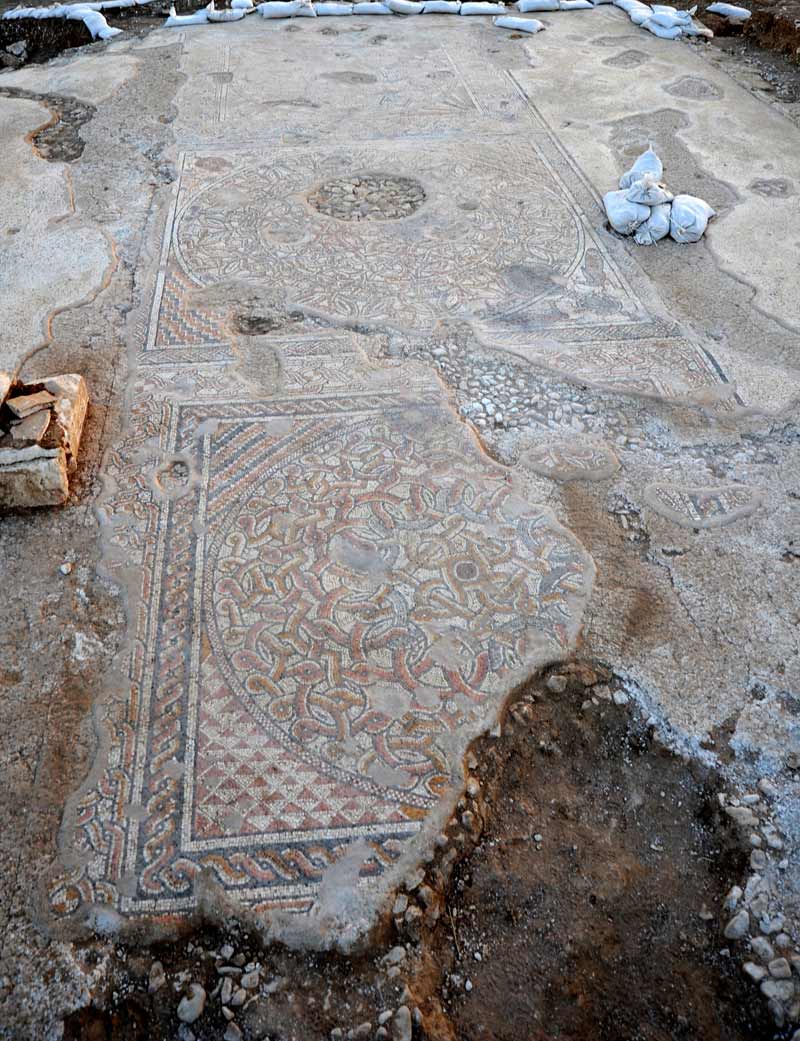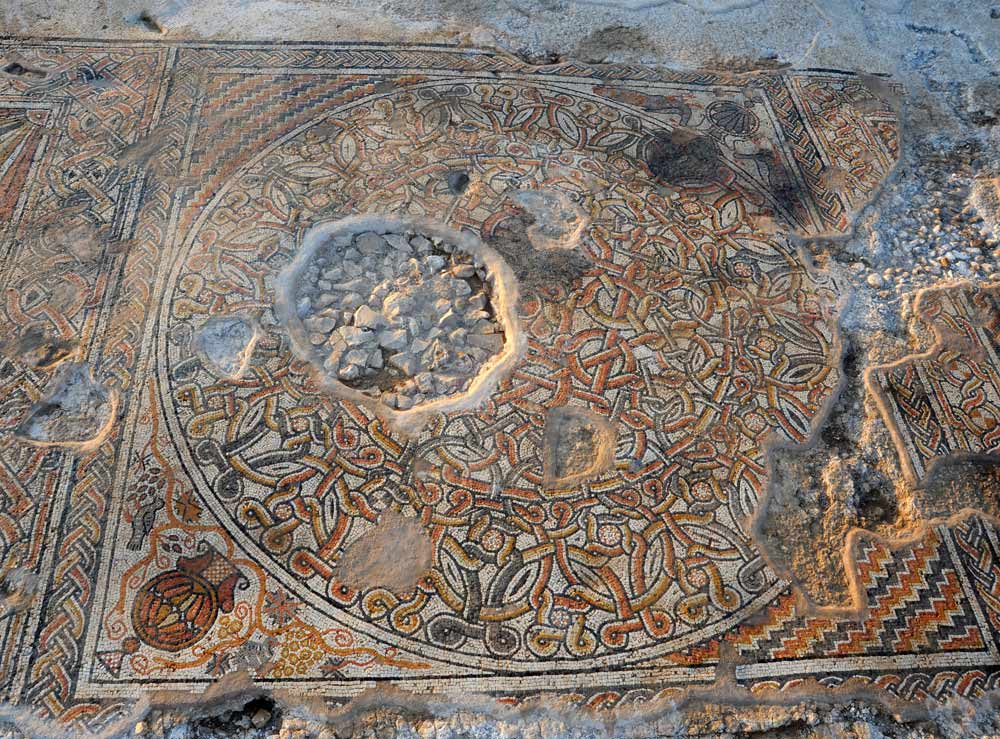Stunning Byzantine Mosaic Uncovered in Israel

Archaeologists have uncovered an "extraordinary" mosaic that would've been used as the floor of a public building during the Byzantine Period in what is today Israel, the Israel Antiquities Authority (IAA) announced.
The colorful mosaic and public building, whose ceiling was covered in roof tiles, were uncovered in Kibbutz Bet Qama, in the B'nei Shimon regional council, prior to the construction of a road between Ma'ahaz and Devira Junction.
"The minute we started excavating we found the mosaic, before we found the edges of the building," Davida Eisenberg Degen, an archaeologist with the IAA, told LiveScience during an interview. [See Images of the Byzantine Mosaic]
The mosaic would've extended the area of the main building, with a total area about 40 feet long by 28 feet wide (12 meters by 8.5 meters). Divided into three squares with circles within each, the mosaic was decorated with "interwoven designs," Degen said. At each corner were amphoras, or jars used to hold wine, and other designs, such as two peacocks flanking an amphora, a dove and a partridge, and one amphora with a pomegranate and a lemonlike fruit inside.

Though other areas of the site showed evidence of the practice of Christianity, the public building seemed to have no religious affiliation. The researchers aren't sure what it would've been used for between the fourth and sixth centuries A.D.
"The find of this mosaic is extraordinary; the size of it and the [condition] goes beyond what is usually found," Degen said. "This is an unusual find."
In front of the building, archaeologists had also discovered pools and a network of channels and pipes used to convey water between them. Steps were uncovered in one of the pools, the walls of which were covered in colored plaster, called fresco.
Sign up for the Live Science daily newsletter now
Get the world’s most fascinating discoveries delivered straight to your inbox.
Archaeologists are trying to figure out the purpose of the building and pools, though they say the construction of the structures would have required considerable economic resources.
The site of the excavation is located on an ancient road that ran north from Be'er Sheva and also includes a large estate with a church and a large cistern surrounded by farmland. One of the structures likely served as an inn for visitors, the researchers speculate.
During the Byzantine Period, Jewish and Christian settlements in the area would have been situated next to each other. In fact, scientists just excavated two nearby Jewish settlements: Horbat Rimon, which held a synagogue and ritual bath called a miqwe, and the Nahal Shoval antiquities site. Nearby Christian settlements include the churches at Abu Hof in the Lahav Forest and a monastery at Givot Bar.
Follow Jeanna Bryner on Twitter and Google+. Follow us @livescience, Facebook & Google+. Original article on LiveScience.com.
Jeanna Bryner is managing editor of Scientific American. Previously she was editor in chief of Live Science and, prior to that, an editor at Scholastic's Science World magazine. Bryner has an English degree from Salisbury University, a master's degree in biogeochemistry and environmental sciences from the University of Maryland and a graduate science journalism degree from New York University. She has worked as a biologist in Florida, where she monitored wetlands and did field surveys for endangered species, including the gorgeous Florida Scrub Jay. She also received an ocean sciences journalism fellowship from the Woods Hole Oceanographic Institution. She is a firm believer that science is for everyone and that just about everything can be viewed through the lens of science.










